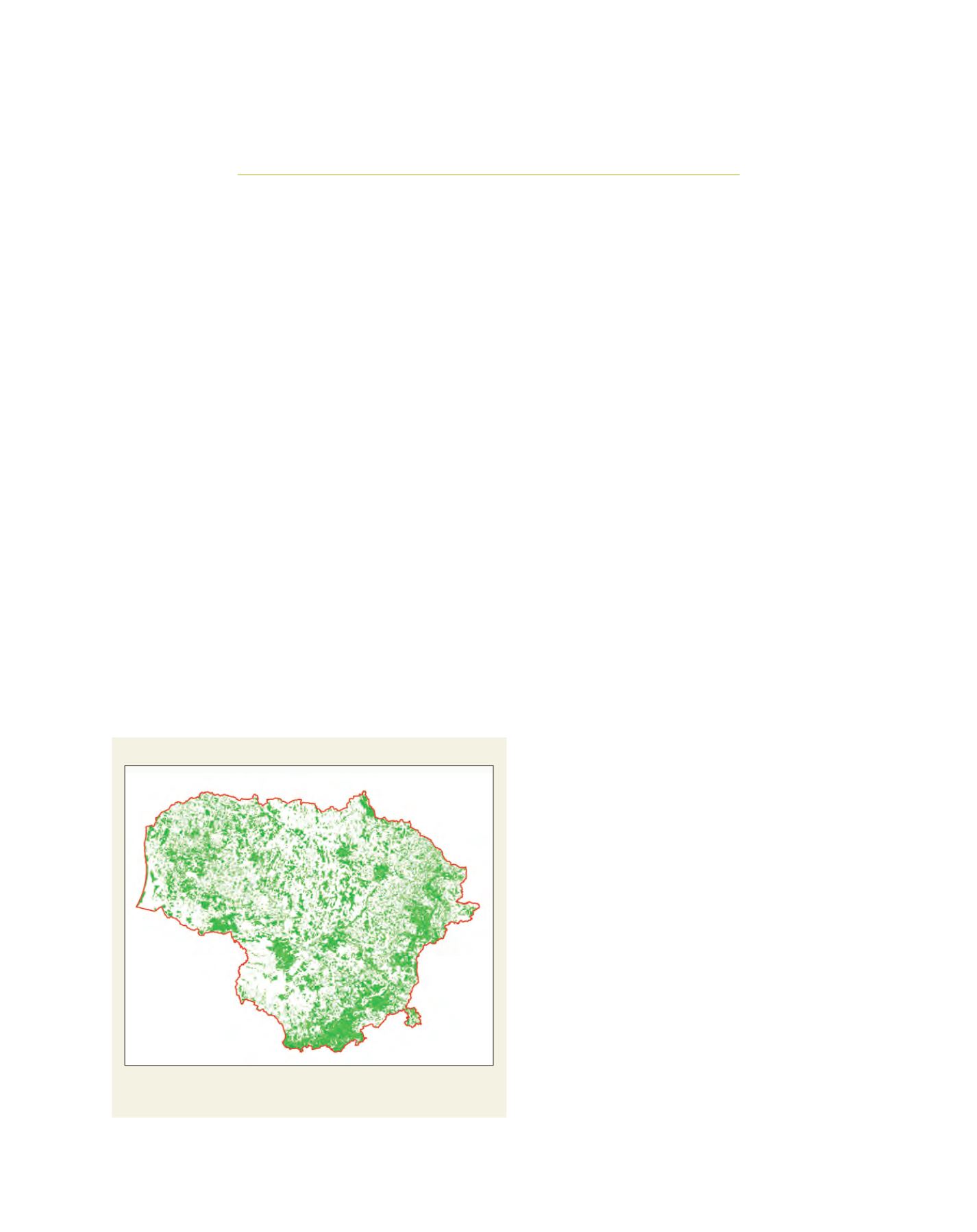

[
] 193
Lithuania’s sustainable forests
Gediminas Jasinevi
č
ius, Department of Forests, Ministry of Environment, Lithuania
L
ithuania is a small country with a total area of 65,200
km
2
, situated in the northern part of Central Europe
along the south-eastern shore of the Baltic Sea. One
third of Lithuanian land is covered by coniferous, broadleaf
and mixed forests. The dominant tree species are pine, spruce
and birch. Forests represent one of the major Lithuanian natural
resources, serving for the welfare of the State and citizens.
Forestry and forest industries have an important role in the
national economy, accounting for about 3.6 per cent of gross
domestic product.
Lithuanian forest policy
In 1991, after Lithuania regained its independence from the Soviet
Union, it became a Member State of the United Nations and
also of the pan-European policymaking process, the Ministerial
Conference on the Protection of Forests in Europe (MCPFE). The
First Lithuanian Law on Forests and the National Forest Programme
were adopted in 1994. These legal acts are based on the principles
of sustainable forest management. The main goals of both previ-
ous and current laws governing forests as well as of the National
Forest Programme are to achieve sustainable forest sector develop-
ment, satisfy the forest-related needs of various groups of society
and ensure the preservation of forests for future generations. This
requires an acknowledgment of forest growth duration,
taking into account different forms of ownership and
the relationship between them, by promoting condi-
tions for the proper management of forests leading to
economic benefits for the country. Long-term forest
policy has been formed in Lithuania in compliance with
the policies of other branches of the economy of the
country, based on national traditions and the require-
ments of European Union legal norms, international
conventions, resolutions, agreements, programmes and
national legal acts.
Sustainable forest management in Lithuania is
widely accepted as the overriding objective for forest
policy and practice. Forests are used very responsi-
bly and annual or periodic timber harvest rate does
not exceed timber growth. The current annual timber
harvest rate is around 6 million m
3
, less than half of
annual timber growth.
Forest area expansion is one of the main objectives of
Lithuanian forest policy. Due to the implementation of
sustainable forest management and of various national
afforestation programmes over the last 20 years, forest
coverage in Lithuania has increased by 3.4 per cent to
reach 33.2 per cent while at the same time growing
stock volume has risen significantly.
Collaboration in the forest policymaking process
Cooperation with European institutions, international
organizations, stakeholders and the public is an integral
part of the forest policymaking process. Policy takes
into account the opinions of all interested groups in
society, balancing the interests of forest owners, forest
governors and users, wood processors, environmental
organizations and other social groups involved with
forests and the forestry-related economy. All major
forestry policy statements comply with the require-
ments of separate stakeholders and are submitted for
public consideration.
The Forest Owners Association of Lithuania (FOAL),
the national public organization that represents and
unites private forest owners, is helping to develop
management structures for private forestry. Established
in 1993, it now has more than 5,000 active members.
FOAL also works with non-members through 38
regional units. Founded to represent the interests of
forest owners and to develop an institutional framework
for family forestry, FOAL has the status of an independ-
ent public NGO. It is also recognized internationally
Forests of Lithuania
One third (more than 2 million ha) of Lithuanian land is covered by
coniferous, broadleaf and mixed forests
Source: State Forest Service
















